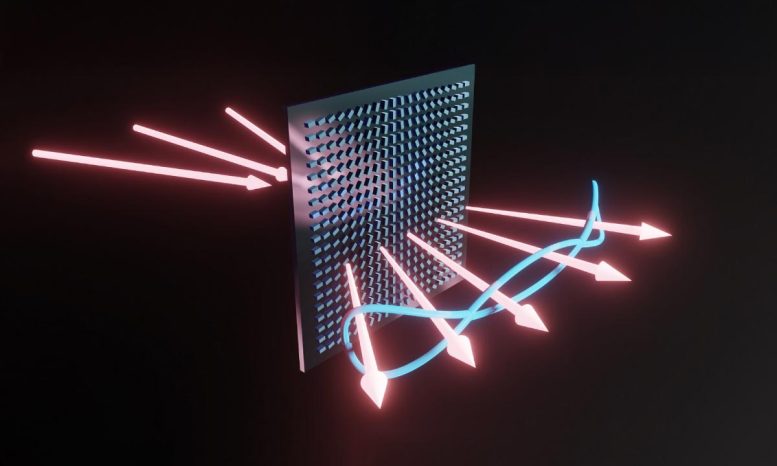
Quantum computing has long struggled with creating entangled photons efficiently, but a team of researchers has discovered a game-changing method using metasurfaces—flat, engineered structures that control light.
By leveraging these metasurfaces, they can generate and manipulate entangled photons more easily and compactly than ever before. This breakthrough could open the door to smaller, more powerful quantum computers and even pave the way for quantum networks that deliver entangled photons to multiple users.
Revolutionizing Quantum Information Processing
Quantum information processing relies on the entanglement of multiple photons to handle vast amounts of data. However, creating these entangled photons efficiently remains a major challenge. Traditional methods either use quantum nonlinear optical processes, which struggle with scaling to large numbers of photons, or linear beam-splitting and quantum interference, which require complex and delicate setups prone to loss and crosstalk.
A research team from Peking University, Southern University of Science and Technology, and the University of Science and Technology of China recently achieved a breakthrough in this area. As reported in Advanced Photonics Nexus, they developed a new technique using metasurfaces—ultrathin, engineered structures that precisely control light’s phase, frequency, and polarization. This approach enables the creation of multiphoton entanglement on a single metasurface, making the process simpler and more efficient.
Harnessing Metasurfaces for Entanglement
Their method works by directing multiple single photons toward a specially designed gradient metasurface from different angles. The metasurface manipulates these photons so that they interfere in a quantum manner, producing entangled photon states. This technique not only allows for the generation of various entangled states but also enables the fusion of multiple entangled photon pairs into larger, more complex groups. As a result, more quantum information can be encoded in a smaller space, potentially advancing quantum computing and communication technologies.
Professor Ying Gu, corresponding author on the report, remarks on this new approach as a fresh perspective for quantum information processing: “It’s like finding a shortcut in a maze. Instead of trying to navigate the twists and turns of complex optical setups, we can use a single metasurface to do the job. The process of creating and manipulating entangled photons becomes much simpler and more compact. It’s perfect for building tiny quantum devices that could fit on a chip, making it a great solution for future quantum computing and communication applications.”
Paving the Way for Future Quantum Technologies
With this new method of creating multiphoton entanglement, many quantum applications may become more accessible. For instance, metasurfaces could be used to generate and deliver entangled photons to multiple users, facilitating the creation of a quantum network. Additionally, metasurfaces could serve as building blocks for handling more photons, potentially leading to the development of quantum computers as small as laptops. Such possibilities are exciting, and this research moves us a step closer to realizing them.
Reference: “Multiphoton path-polarization entanglement through a single gradient metasurface” by Qi Liu, Xuan Liu, Yu Tian, Zhaohua Tian, Guixin Li, Xi-Feng Ren, Qihuang Gong and Ying Gu, 13 February 2025, Advanced Photonics Nexus.
DOI: 10.1117/1.APN.4.2.026002
Never miss a breakthrough: Join the SciTechDaily newsletter.